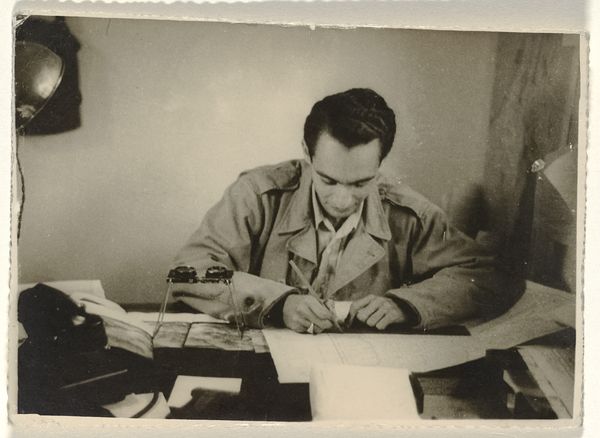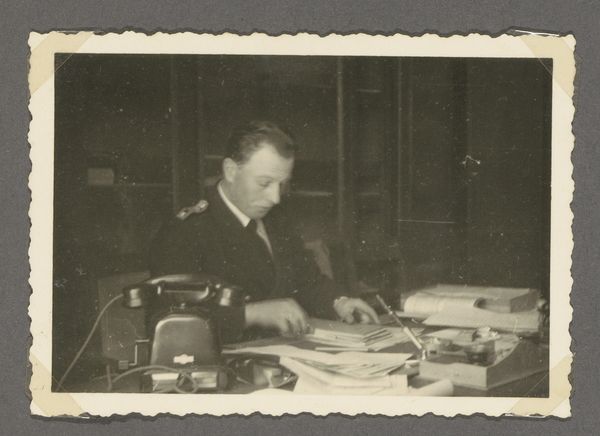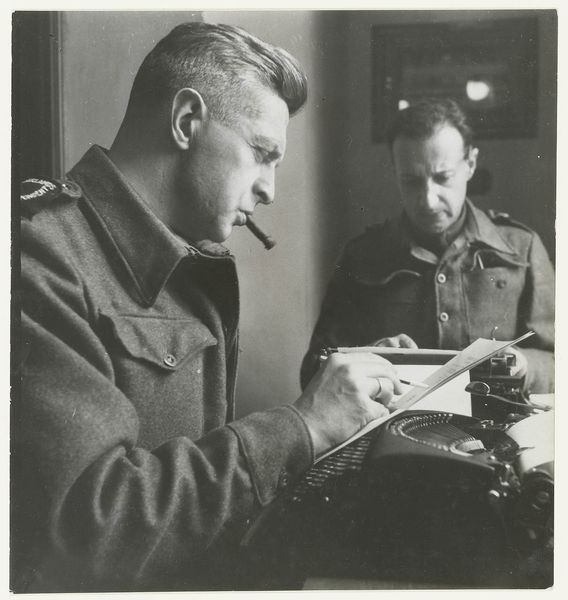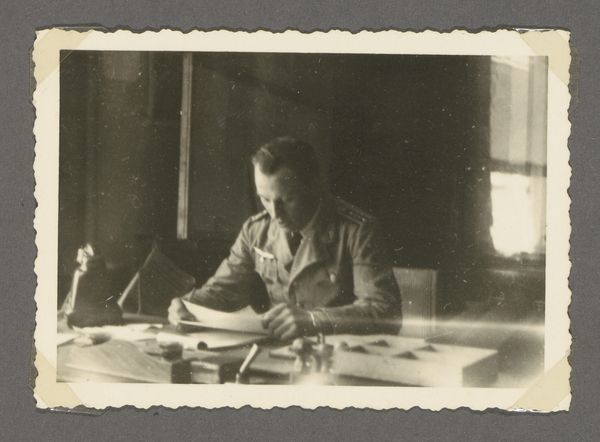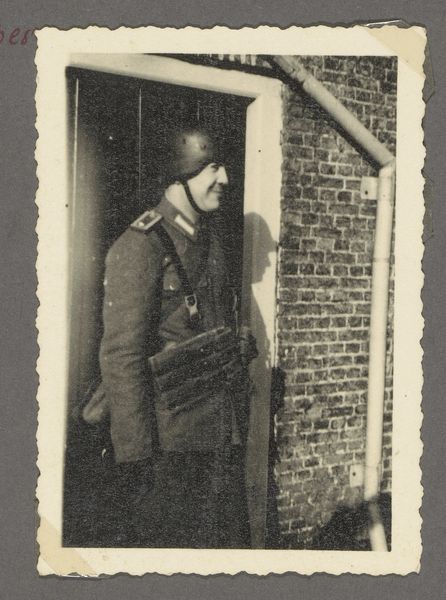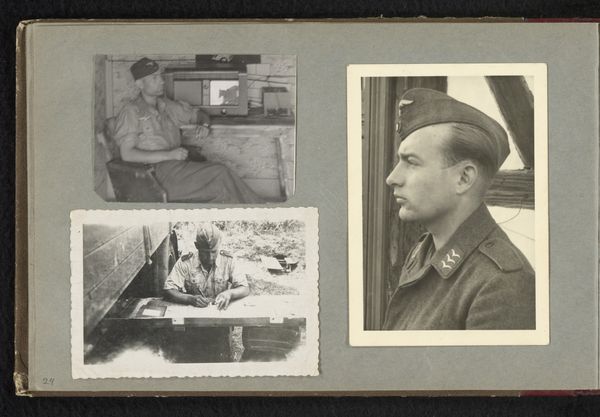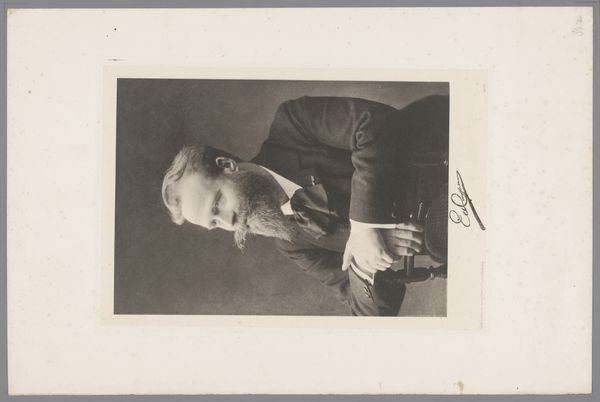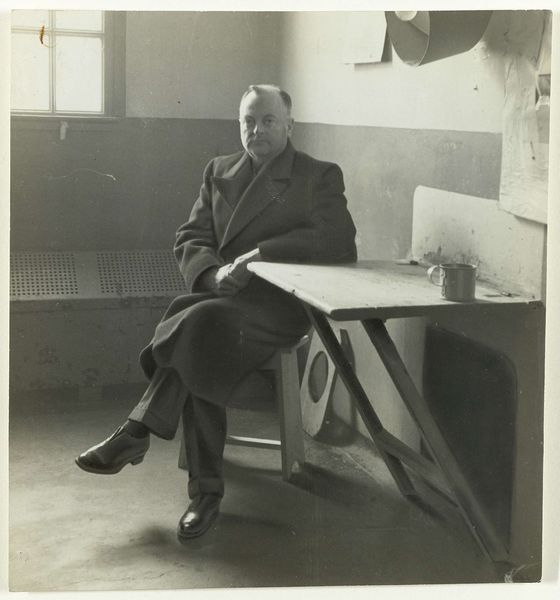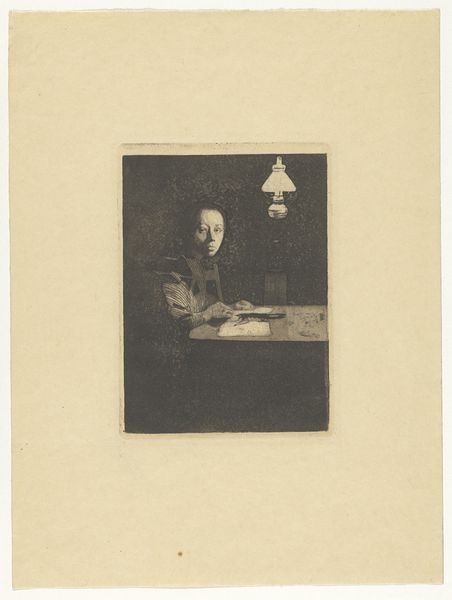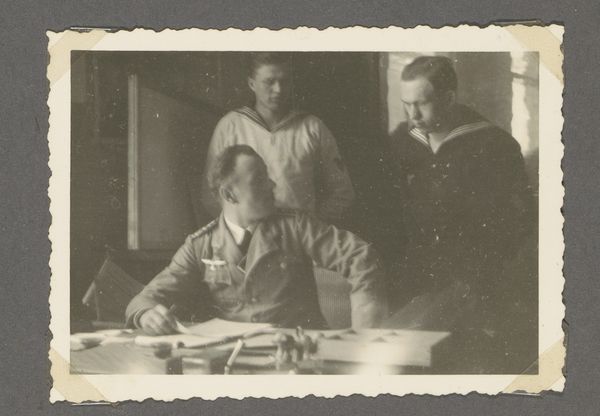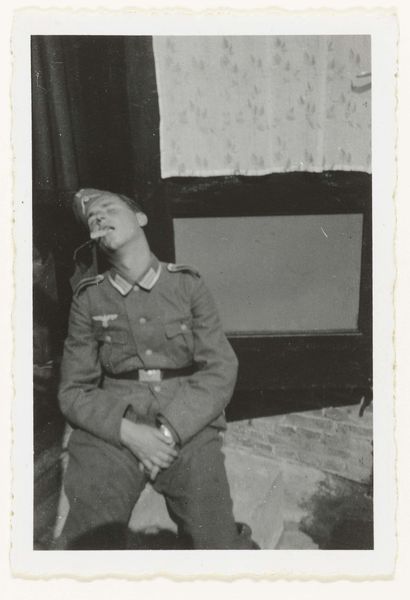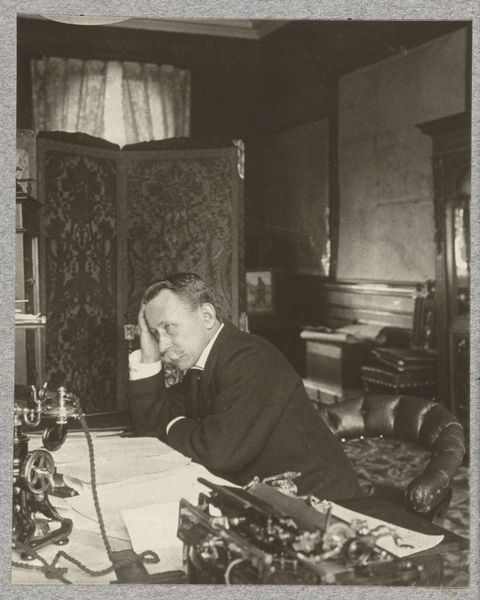
Dimensions: height 6.5 cm, width 6.5 cm
Copyright: Rijks Museum: Open Domain
Editor: This photograph, titled "Wehrmacht militair bij de administratie," is a gelatin-silver print from somewhere between 1941 and 1943. It depicts two German soldiers in what seems to be an administrative office. There’s a banality to it, an everyday feel despite the context. What do you see in this piece? Curator: I see a carefully constructed image of power, or rather, the performance of it. While seemingly banal, the photograph subtly reinforces a particular vision of the Nazi regime. Look at the crisp uniforms, the organized desk, the setting within an ordered, almost domestic space. It's not just about military administration; it’s about projecting an image of control and normalcy. How does the realism, devoid of glorification, play into that? Editor: So, the realism isn't necessarily about portraying the reality of war, but rather a carefully curated image *of* reality? Curator: Precisely. Consider the historical context. This was taken during wartime, a period of immense upheaval and violence. By presenting these soldiers in such a composed manner, the photograph works to normalize their presence and their activities, distancing them from the atrocities being committed. The photograph becomes a tool for propaganda, subtly shaping perceptions and reinforcing the regime's power. What philosophical questions about the representation of power does this raise for you? Editor: It makes me think about the power dynamics inherent in image-making itself. The photographer, likely sanctioned by the Wehrmacht, had control over what was shown, framing the soldiers in a way that served a particular narrative. It's unsettling how easily such images can become normalized, obscuring the complexities and horrors of the war. Curator: It highlights how photography, even in its seeming objectivity, can be complicit in shaping historical narratives. It also reminds us to critically examine the power structures behind the images we consume. The act of remembering should always include critical interrogation of power, gender and race. Editor: This has given me a lot to consider about the photograph's purpose and how its apparent simplicity hides a complex agenda. Curator: And hopefully it encourages us to continuously question the narratives presented to us.
Comments
No comments
Be the first to comment and join the conversation on the ultimate creative platform.
